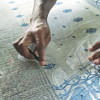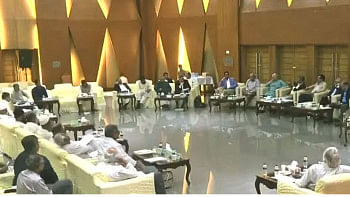Jamdani shows promise in high-end global market

A new export opportunity has opened up for Bangladesh as high-end apparel items made from local fabrics such as jamdani bring higher prices and offer an increased level of value-addition.
Currently, the shipment of garment items made from jamdani fabrics is very low since only a handful of companies are exploring opportunities in the segment in the global markets.
Some boutique designers buy jamdani, a hand loom woven fabric made of cotton, from local weavers based in Sonargaon and Rupganj of Narayanganj in order to make export-oriented apparel items.
In order to support their efforts and raise export earnings from the shipment of apparel items made from the expensive items, the Bangladesh Garment Manufacturers and Exporters Association (BGMEA) initiated a move.
The trade body, in collaboration with the commerce ministry and the World Trade Organisation, has trained 160 students, weavers and jamdani makers to equip them with the skills to come up with designs in a bid to capture a sizeable share of the global market for high-end garment items.
"Local manufacturers will gradually start producing high-end garment items from jamdani as the prices of the goods are very high," said Faruque Hassan, president of the BGMEA.
He was speaking at a programme organised to hand over certificates to the trainees at the BGMEA Complex in Dhaka yesterday.
The BGMEA initiative is part of its aim to double the export earnings to $100 billion by 2030 from less than $50 billion now and double its share in the apparel segment.
A normal jacket made from heritage materials like jamdani retails at more than $800 in western markets owing to their strong demand among high-end customers, according to Anadil Johnson, founder of Neval, a Chicago-based fashion house.
Bangladesh can take the opportunity to grab a major share of the $62 billion global market by selling high-end goods, on the back of available skilled workforce and ready materials like jamdani and khadi, she said.
"Bangladesh has a great opportunity to grab a good market share of garment items made from heritage materials as the country has the tradition of making jamdani and muslin."
High-end garment items can be made from jamdani fabrics, which are worn during various occasions such as weddings.
The Bangladeshi-origin fashion designer has been sourcing jamdani fabrics from Sonargaon for more than 10 years to produce expensive garment items for her customers in the US.
She trained the weavers and students at the BGMEA.
India exports $5 billion worth of apparel items made from heritage materials annually, according to Ayub Nabi Khan, pro-vice chancellor of the BGMEA University of Fashion and Technology.
The commerce ministry undertook the project to develop designs for heritage garment items in 2018. The tenure of the project comes to an end this month, said Elias Mia, the project director.
The BGMEA is also working to produce garment items from recycled yarns and fabrics to meet the rising demand in the western countries.

 For all latest news, follow The Daily Star's Google News channel.
For all latest news, follow The Daily Star's Google News channel. 








Comments